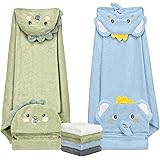It is widely observed that early exposure to music and rhythm plays a significant role in a child’s development. Research consistently indicates that children who engage with nursery rhymes and children’s songs often demonstrate advanced language skills and improved cognitive abilities. The video above, featuring a collection of beloved kindergarten nursery rhymes and playful children’s songs, provides a wonderful example of content designed to support this crucial early learning journey.
From the playful antics of “Five Little Babies Jumping on the Bed” to the timeless tale of “Humpty Dumpty,” these classic tunes are more than just entertainment. They are foundational tools for early childhood education, carefully crafted to engage young minds and foster development in multiple areas. Parents and educators are often seeking engaging, age-appropriate content for their little ones, and these songs effectively deliver on that need.
The Foundational Learning Power of Nursery Rhymes for Early Childhood Development
Nursery rhymes and children’s songs are far from mere diversions; they are powerful educational instruments. These simple melodies and repetitive lyrics are strategically designed to introduce complex concepts in an easily digestible format for toddlers and preschoolers. Through listening and participation, children are implicitly taught a variety of essential skills.
Furthermore, the repetition inherent in these songs is not accidental. It is a critical component that aids memory retention and reinforces learning. Imagine if a child were expected to grasp a new concept with only a single exposure; the likelihood of retention would be significantly lower. Instead, through repeated engagement with tunes like “The Finger Family,” core ideas are firmly established.
Building Blocks for Language and Literacy Skills
One of the most evident benefits derived from engaging with children’s songs is in the realm of language development. Young children are naturally immersed in the sounds and structures of language, absorbing words and phrases like sponges. Rhymes provide a structured way for this absorption to occur.
-
Vocabulary Expansion: New words are introduced in a meaningful context. For instance, “Old MacDonald Had a Farm” familiarizes children with animal names and their sounds, expanding their lexicon in an enjoyable way.
-
Phonological Awareness: The rhyming patterns in songs like “Incy Wincy Spider” help children recognize similar sounds, a vital pre-reading skill. This awareness of sound structures is often linked to future reading success.
-
Rhythm and Pitch: The melodic nature of songs teaches children about the rhythm of speech. This understanding of cadence and intonation is an important part of effective communication.
-
Narrative Structure: Many nursery rhymes, such as “Humpty Dumpty,” tell a simple story with a beginning, middle, and end. This exposure helps children understand basic storytelling concepts, which are crucial for literacy.
Additionally, the act of singing along, even if it’s just humming, encourages articulation and oral language practice. Children are given the opportunity to experiment with sounds and develop clearer speech patterns without pressure, which is an integral aspect of preschool learning.
Cultivating Early Numeracy and Cognitive Skills
Beyond language, children’s songs are exceptional tools for introducing fundamental mathematical concepts. Counting songs, specifically, lay a solid groundwork for quantitative understanding. The simple act of counting along offers a tangible learning experience.
-
Number Recognition and Sequencing: Songs like “Five Little Babies” directly teach counting down from five to one, illustrating a basic subtraction concept. Similarly, the “Numbers” song helps children memorize the sequence of numbers from one to ten.
-
One-to-One Correspondence: When actions accompany counting, such as holding up fingers for “The Finger Family,” children begin to understand that each number corresponds to a single item. This is a crucial early math skill.
-
Memory and Recall: Learning the lyrics and sequences of multiple songs strengthens a child’s working memory. This cognitive exercise supports their ability to retain and retrieve information, a skill beneficial across all academic areas.
-
Problem-Solving Introduction: While subtle, songs like “Humpty Dumpty” introduce the idea of a problem and its resolution (or lack thereof). Children are exposed to narrative arcs that involve events and outcomes, fostering rudimentary problem-solving thought patterns.
Moreover, the repetitive nature of these tunes reinforces patterns, which is a key element of mathematical thinking. Pattern recognition is an early cognitive skill that helps children make predictions and understand order in their environment.
Enhancing Motor Skills and Emotional Expression
Many children’s songs are accompanied by actions, making them invaluable for developing both fine and gross motor skills. These interactive elements transform passive listening into active engagement, benefiting a child’s physical development.
-
Fine Motor Skills: Hand gestures, like those used for “The Finger Family” or “Incy Wincy Spider,” improve dexterity and hand-eye coordination. These small movements are critical for tasks like writing and drawing later on.
-
Gross Motor Skills: Actions such as clapping in “If You’re Happy and You Know It” or jumping (even if just pretend jumping) promote large muscle development and coordination. These activities are vital for balance and overall physical confidence.
-
Emotional Intelligence: Songs like “If You’re Happy and You Know It” encourage children to identify and express emotions through actions and words. This helps them connect feelings with observable behaviors, nurturing social-emotional growth.
-
Social Bonding: When sung in groups, these songs create shared experiences, fostering a sense of community and cooperation. This can be seen in kindergarten settings where children sing together, learning to take turns and synchronize actions.
Simple additions like dancing or swaying along to the music further enhance body awareness and rhythmic abilities. It is through these playful interactions that children’s brains are stimulated, laying down neurological pathways for future learning and movement control.
Nursery Rhymes as Tools for Social and Cultural Learning
Beyond individual skill development, children’s songs serve as a bridge to cultural understanding and social norms. Many rhymes have been passed down through generations, carrying with them a sense of tradition and shared heritage. These familiar tunes provide comfort and a sense of continuity.
For example, the “Baa Baa Black Sheep” rhyme introduces concepts like sharing (“three bags full”) and polite requests, which are essential social lessons. In the same vein, “Old MacDonald Had a Farm” not only teaches animal names but also gives a glimpse into a farm environment, expanding a child’s understanding of the world around them.
Safety and Imaginative Play
The “Five Little Babies Jumping on the Bed” song, while lighthearted, also carries a subtle message about safety and consequences. While presented playfully, the “bumped his head” scenario and the doctor’s advice are easily understood by young children, prompting gentle discussions about safe play.
Furthermore, rhymes like “Row, Row, Row Your Boat” spark imaginative play, encouraging children to visualize scenarios and engage in pretend adventures. Imagine if a child were to picture themselves on a boat, gently moving down a stream, potentially encountering a friendly (or scary!) crocodile. This fosters creativity and expands their internal world.
These engaging narratives provide a safe space for children to explore various roles and situations. This imaginative engagement is not just fun; it is a critical component of healthy cognitive and social development, allowing children to process information and emotions in a playful context.
Leveraging Children’s Songs for Enhanced Learning Experiences
Integrating children’s songs into daily routines offers numerous benefits for both children and caregivers. These educational resources provide a simple yet profound way to engage young minds and create joyful learning moments. Utilizing content like the video above can effectively supplement a child’s early educational journey.
These classic nursery rhymes and kindergarten songs are vital for language development, cognitive growth, and social-emotional learning. They serve as essential building blocks that prepare children for more formal schooling and lifelong learning. The rich tapestry of stories, sounds, and actions embedded in these songs makes them invaluable assets for early childhood education.











